Charcut. Vol. 22
February this year...
It was a snowy February and if it wasn’t snowing, it was cold. One big storm left us with a few good inches, but only for the night, and then several dustings came that looked very charming from the inside side of the various windows that fill my life (living room, kitchen, office, bedroom one that I can see out of while laying bed). It felt really like real winter.
But also now, the sun sets at 5:51 instead of 5:17, which is really a miraculous difference. It happened both suddenly and at a crawl. Here’s how: one day in early February, you leave the office a little earlier than usual, and the sun hasn’t completely set! You feel a little high. And then only a handful of days later you leave at the normal time and the sun still hasn’t completely set. You feel certain that something is really happening now.
Of all things, I feel most passionate about that something. It’s the little inkling that grabs hold of me this time of year—I call it the how do you know, which must be credited to Thomas Hardy. I have many favorite poems, but none come into my mind totally unannounced and unbeckoned in the same way that “The Year’s Awakening” does. Every spring, its primordial message beats in my brain, how do you know, how do you know. I am amazed to find that I do know. In the February snow, I do know. In the wind rushed clouds of the earlier sunset, I do.
How do you know that the pilgrim track
Along the belting zodiac
Swept by the sun in his seeming rounds
Is traced by now to the Fishes’ bounds
And into the Ram, when weeks of cloud
Have wrapt the sky in a clammy shroud,
And never as yet a tinct of spring
Has shown in the Earth’s apparelling;
O vespering bird, how do you know,
How do you know?
How do you know, deep underground,
Hid in your bed from sight and sound,
Without a turn in temperature,
With weather life can scarce endure,
That light has won a fraction’s strength,
And day put on some moments’ length,
Whereof in merest rote will come,
Weeks hence, mild airs that do not numb;
O crocus root, how do you know,
How do you know?Through January, though I didn’t write about it then, my great preoccupation was my acorn. My mom and I both got these special vases two Christmases ago that make it possible to turn an acorn into an oakling in your living room. When the acorns fell in the fall, I collected a handful, and we wrapped them in damp paper towels and put them in the refrigerator for eight weeks. During this part, the wait is excruciating, but eventually the tap root grows. Once it’s long enough to reach the water while the acorn sits in its little cup, you can take it out of the fridge and put it into the vase.
The first picture below is of my acorn on January 2nd. I came home from Christmas travels and was thrilled to see that my acorn had split while I was away. This seemed like a good sign. The rest of the pictures were taken on the 6th, the 7th the 9th, the 11th, the 14th, the 15th, the 17th, the 24th respectively .
It was a life changing month for me and acorn alike, and I’m still astounded when I look at the pictures. It was, no exaggeration, thrilling. Every morning and every evening my acorn was growing into a mighty oak. Change visible to my human eye. Don’t roll your eyes, but I imagine that having a baby must produce a similar feeling.
Now, since the 24th of January, the pictures are less astounding. In fact, they all look the same—only the leaves perhaps a little darker. My mom worries about her acorn. Why isn’t it growing anymore? But I tell her that it is. It’s just not as noticeable, the leaps not as big from day to day. Instead of an inch of height there’s a fraction of a millimeter of increased width around each little stalk. The roots bulk up, too. Bigger and stronger, nourishing and feeding itself quietly, without fanfare or outrageous shouting (I’ve grown, I’ve grown) what that means? Visually? Just about identical.
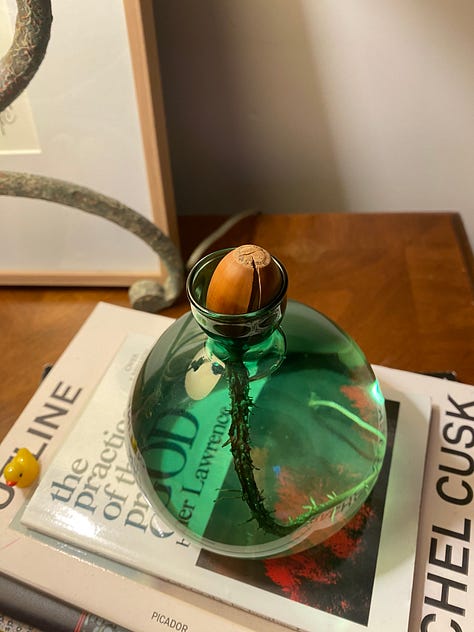
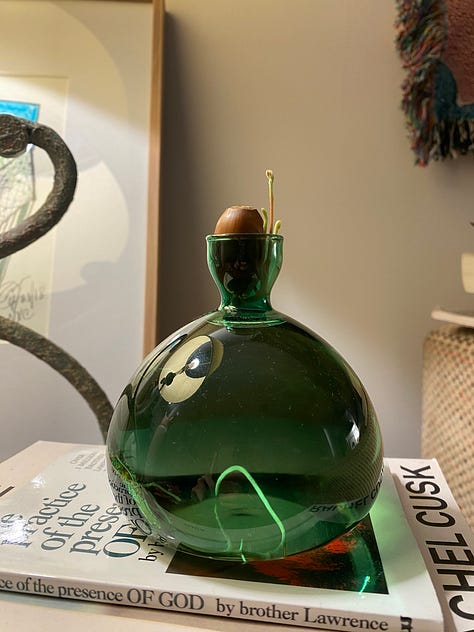
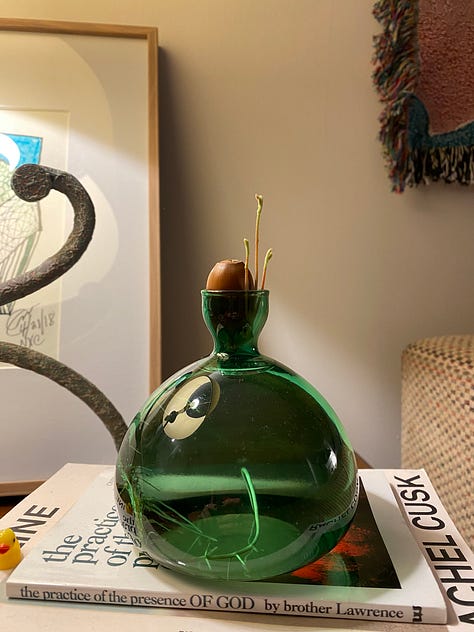

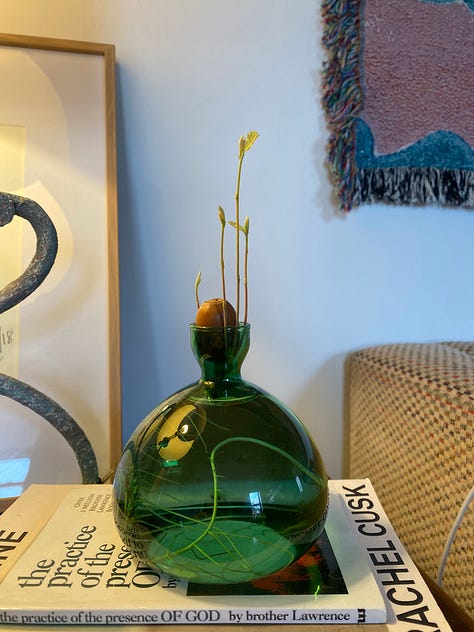
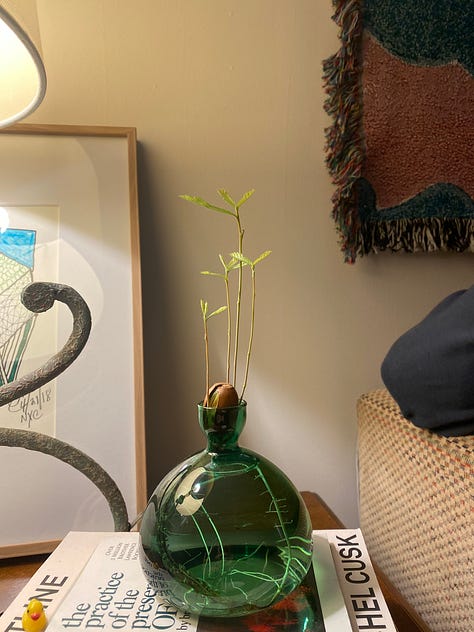
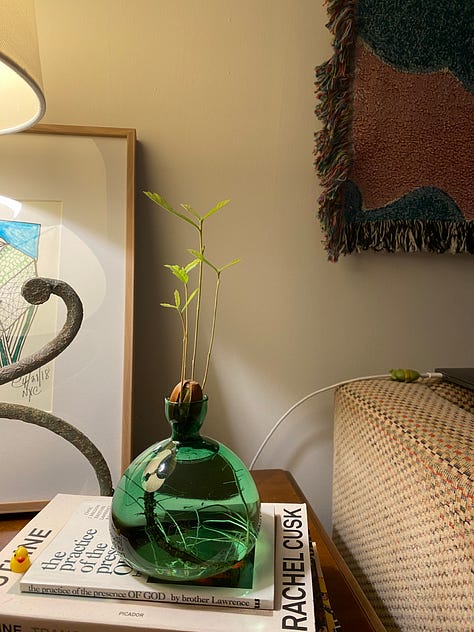
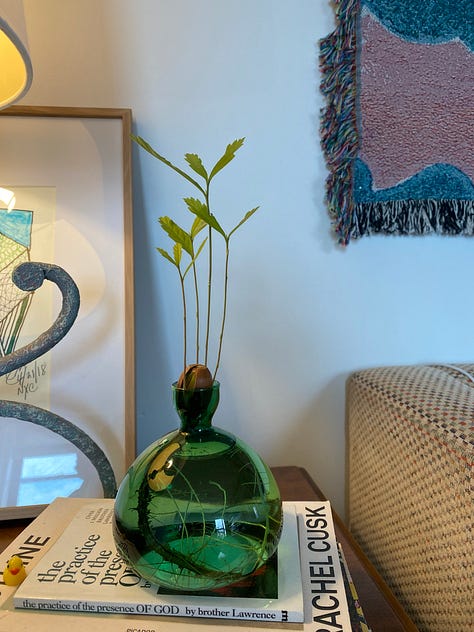
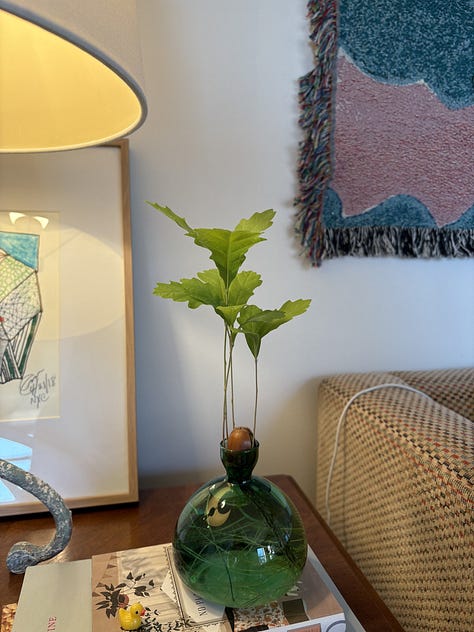
I too have nourished myself and grown I think, even though I look the same.
I read “Ghost Horses” by Laura Van Den Berg, in which change (transformation) comes on in a storm of hoofbeats, sudden and uncommunicable for a woman visiting a conservation area with her skittish dog.
I read “The Anti-Social Century,” by Derek Thompson as mentioned in last week’s review of White Nights. I wouldn’t call it the most uplifting piece, but I do think it should be required reading—and he strikes a hopeful note at the end at least. Of course it’s possible to not be anti-social. It’s possible to opt out of the bad stuff. And Catherine Shannon’s piece on quitting her smart phone shows what that might look like in the extreme. Though of course, the whole point is that it shouldn’t actually feel extreme. But it does.
I also read Lola Kirke’s Wild West Village, which I recommend to anyone who enjoys a celebrity memoir OR a reflective collection of not always linear personal essays. It is both things (even though it says not a memoir on the cover) and is well done. Lola grows up wild and in the West Village. Encouraged from a young age to be an artist, it takes a little bit of searching to figure out what kind of artist to be.
I read for it for Liz’s Open Book Club NYC, and had a ball at the meeting I attended. Above is my copy of the book getting ready to board the L train.
For literal nourishment, February’s new recipes were Sara Keene’s Leeks & Beans in Brothy Brine, which was a 10/10, and homemade kaiser rolls, which were also a 10/10 (though I hold myself to a high standard, and I actually thought they didn’t turn out that well (too dense), my loyal taste testers, (Kathryn, lover, Baba & Jedo) gave rave reviews so we’re going with 10/10).
Outside my own kitchen, two restaurants were real winners—Noodle Pudding (that name!!!!!) and Penny. These two restaurants probably couldn’t be more different, but you know what, I contain multitudes!!! Noodle Pudding (rec courtesy of Olivia Weiss over at right on Franklin) was a cozy neighborhood spot. I mean just look at those Valentine’s Day decorations. Kathryn and I walked in at 6:30ish on a Friday night and were seated within 10 minutes. The food was truly delicious—I had the orecchiette with sausage and broccoli rabe, which is my current pasta hyper fixation.
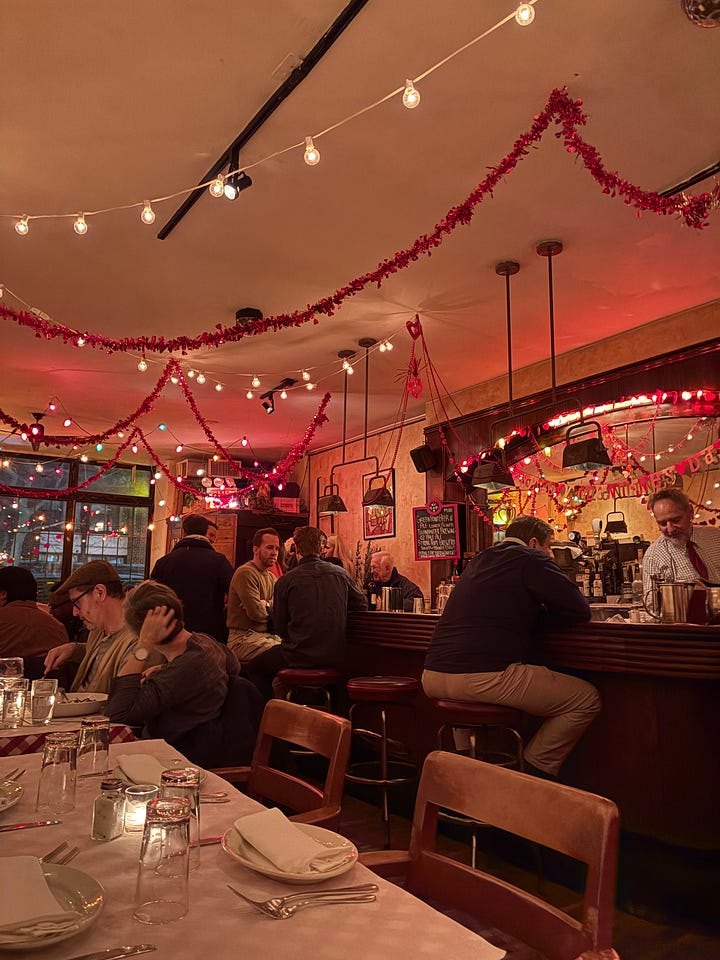
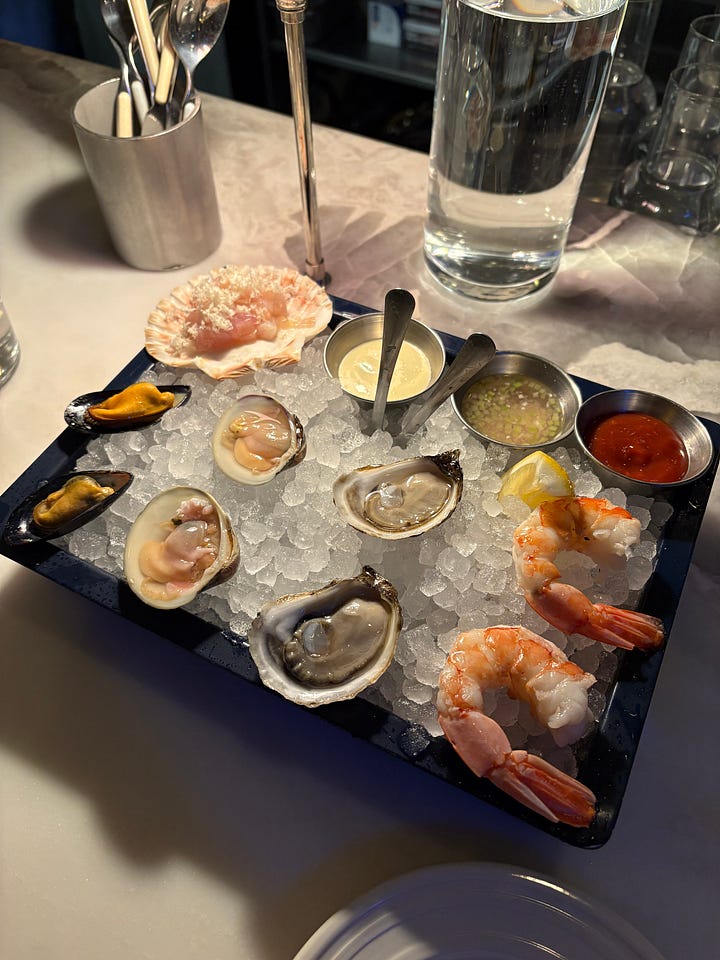
Penny on the other hand was sleek and chic! Bar seats ONLY, though the stools do have backs at least. My Maggie took me (after snagging a reservation through ResX if that tells you anything) and we shared everything. The little icebox pictured above, baked razor clams, tuna carpaccio, stuffed squid (yum), carrots and sesame brioche (you know when a cloud of steam puffs out when you rip the bread open that it will be good). The highlight was our bottle of wine, which the lovely sommelier brought up for us from the cellar. I know nothing about white wine, other than that I like whichever one he gave us.
Maggie also took Maddie and me to the Guggenheim for the Harmony and Dissonance show on Orphism in Paris (1910-1930). When I was in Paris last year, I found myself quite drawn to the pieces by Robert and Sonia Delaunay displayed at the Pompidou. This show was the perfect thing to make me an assured fan.
Frances Picabia was there too, whose art I also saw in Paris—at an exhibit at the Picasso museum. And I learned about Stanton MacDonald-Wright, who was one of the founders of American Synchromism (the American cousin to Orphism). MacDonald-Wright was born in Charlottesville, Virginia, which is a place near and dear to this girl’s heart.
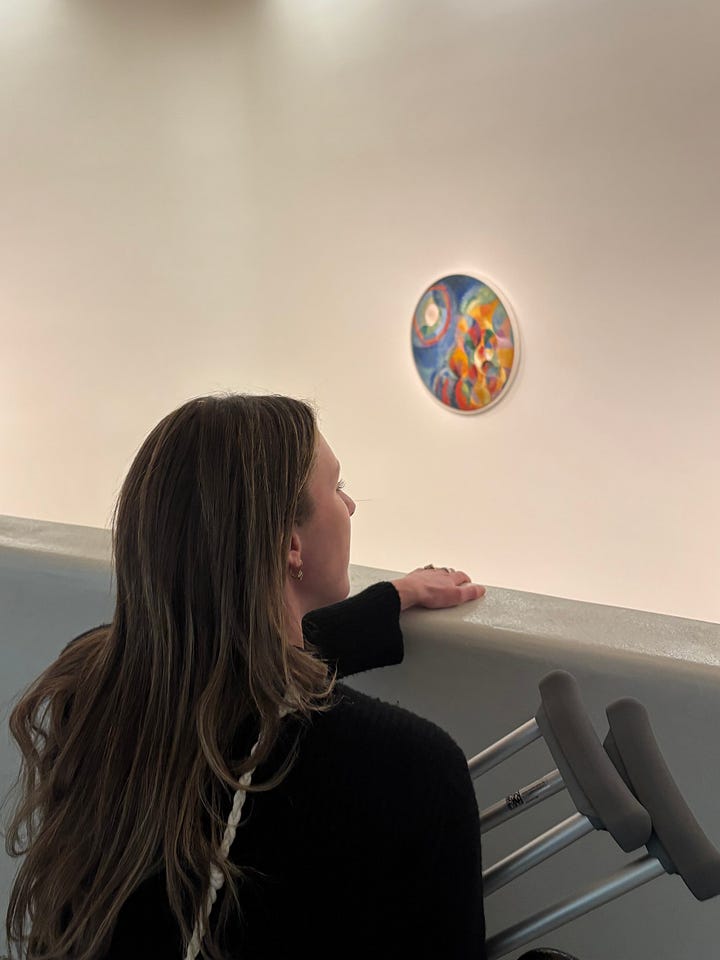
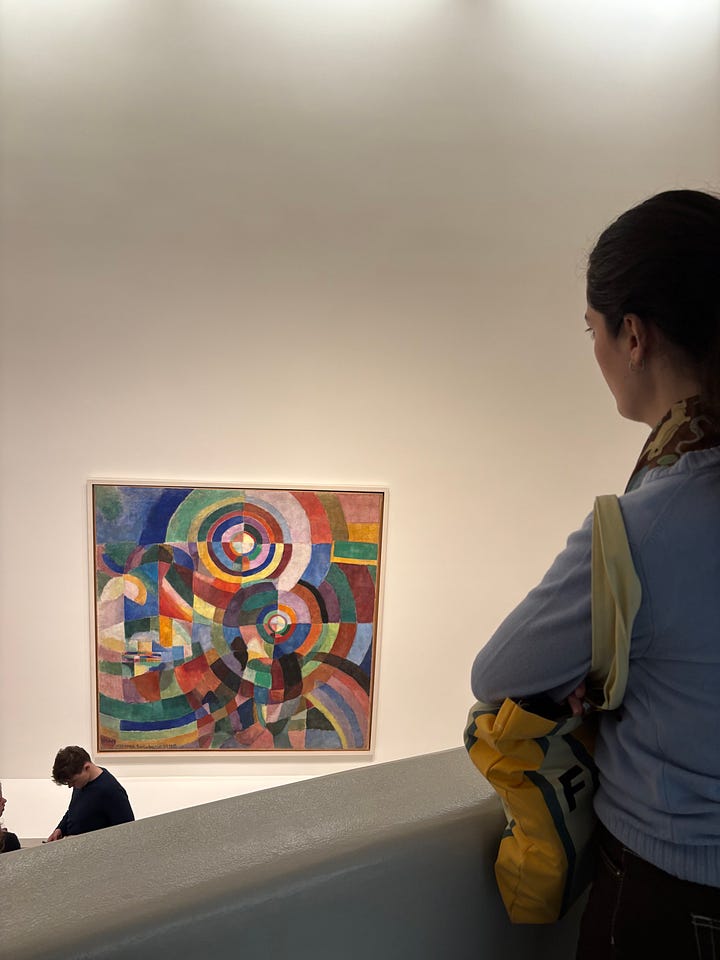
At the show, Ron Padgett also read me “She Has a Body on Her Dress” by Blaise Cendrars through a little handheld receiver. You can listen to him read it too here.
For those of you who have forgotten or might have somehow missed it I am also DOING THE ARTIST’S WAY. Yes, that’s right. So that’s been a defining factor of my February. I’m almost done with week 4, but I’ve been very resistant, so I think I’m going to have to repeat it. That being said, I have two important things to tell you, by way of Julia Cameron:
Ask for what you want
& when it arrives, don’t look a gift horse in the mouth.
Love you, mean it, bye!


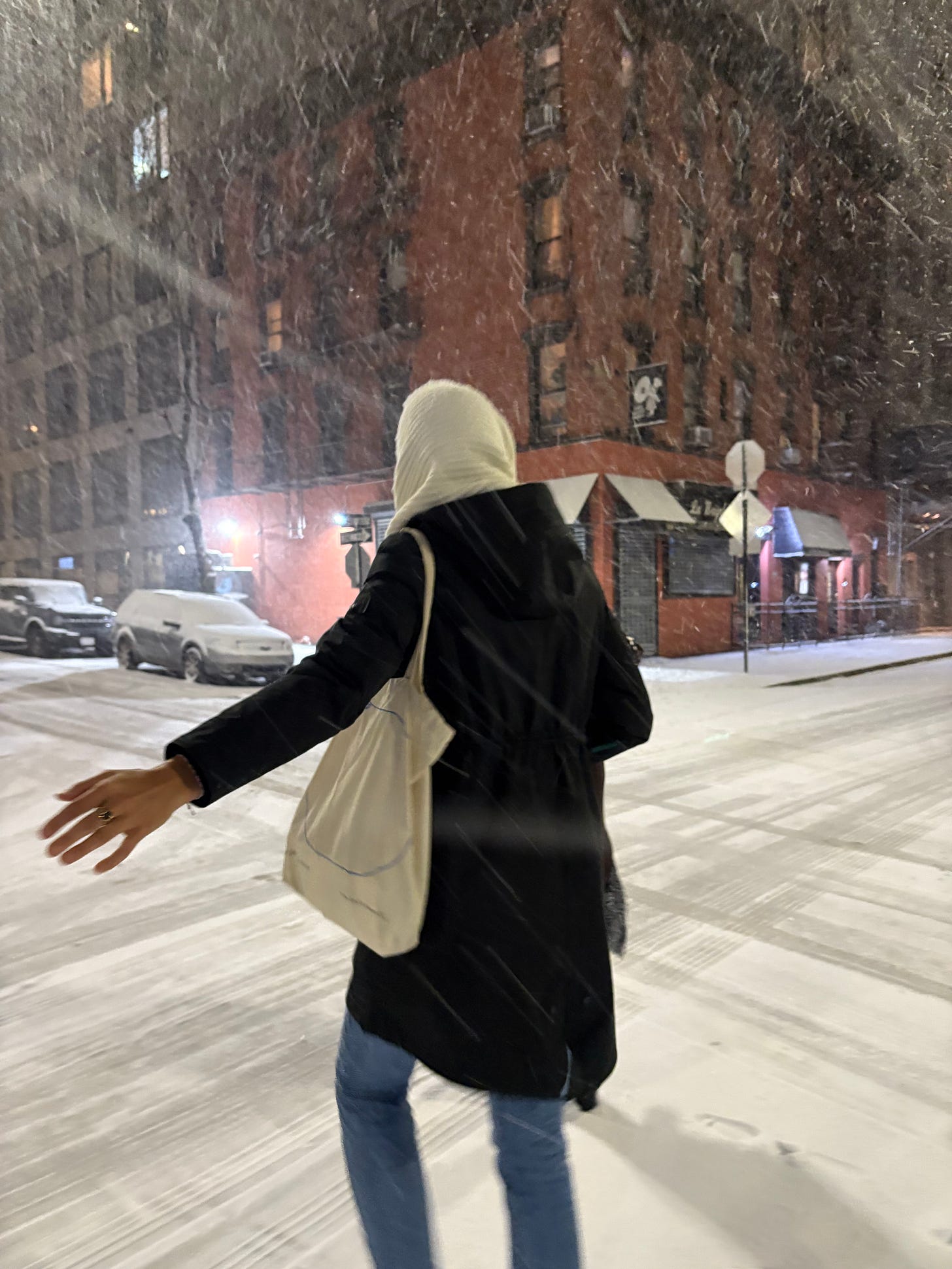
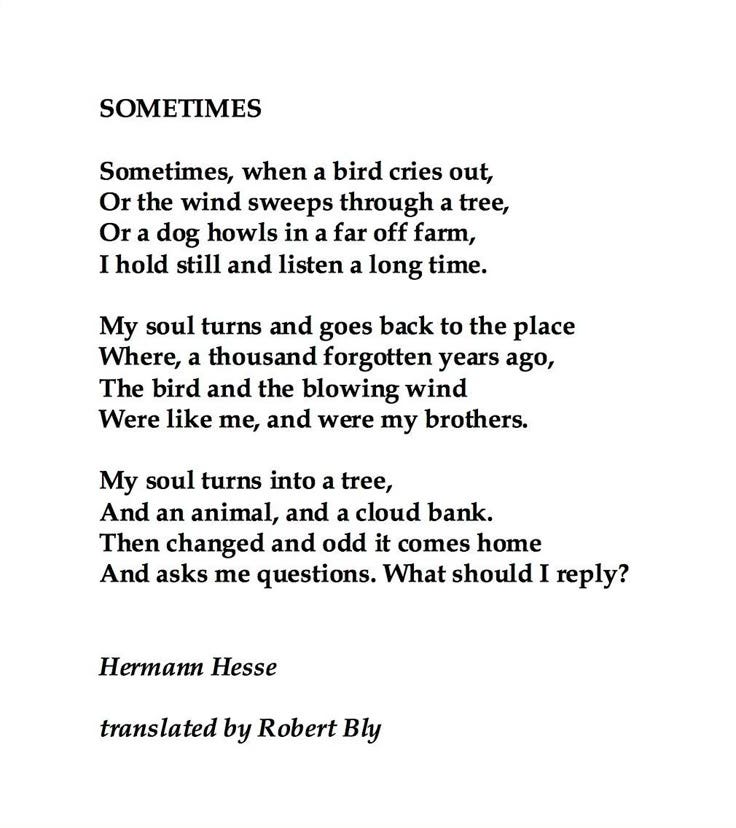
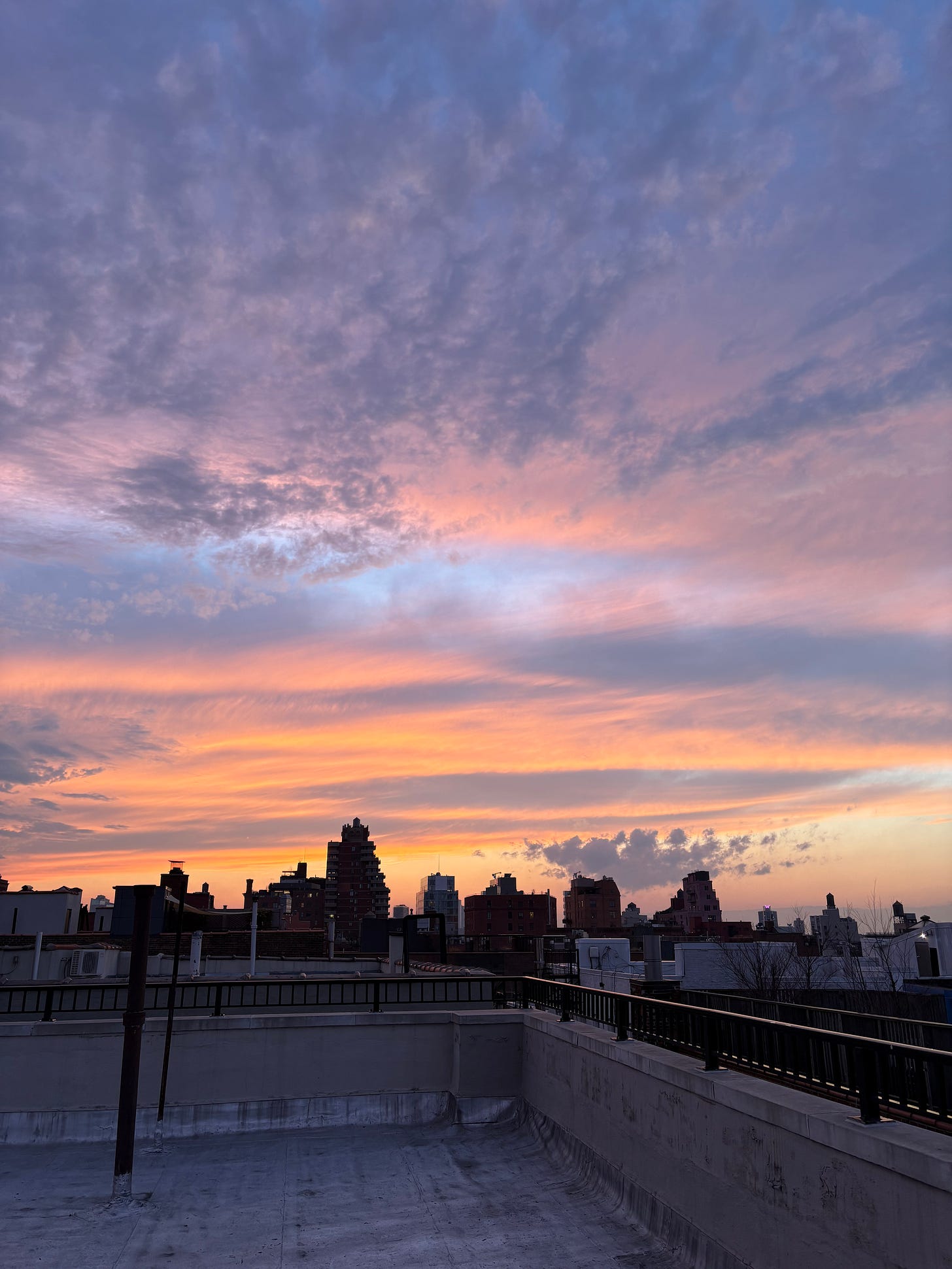

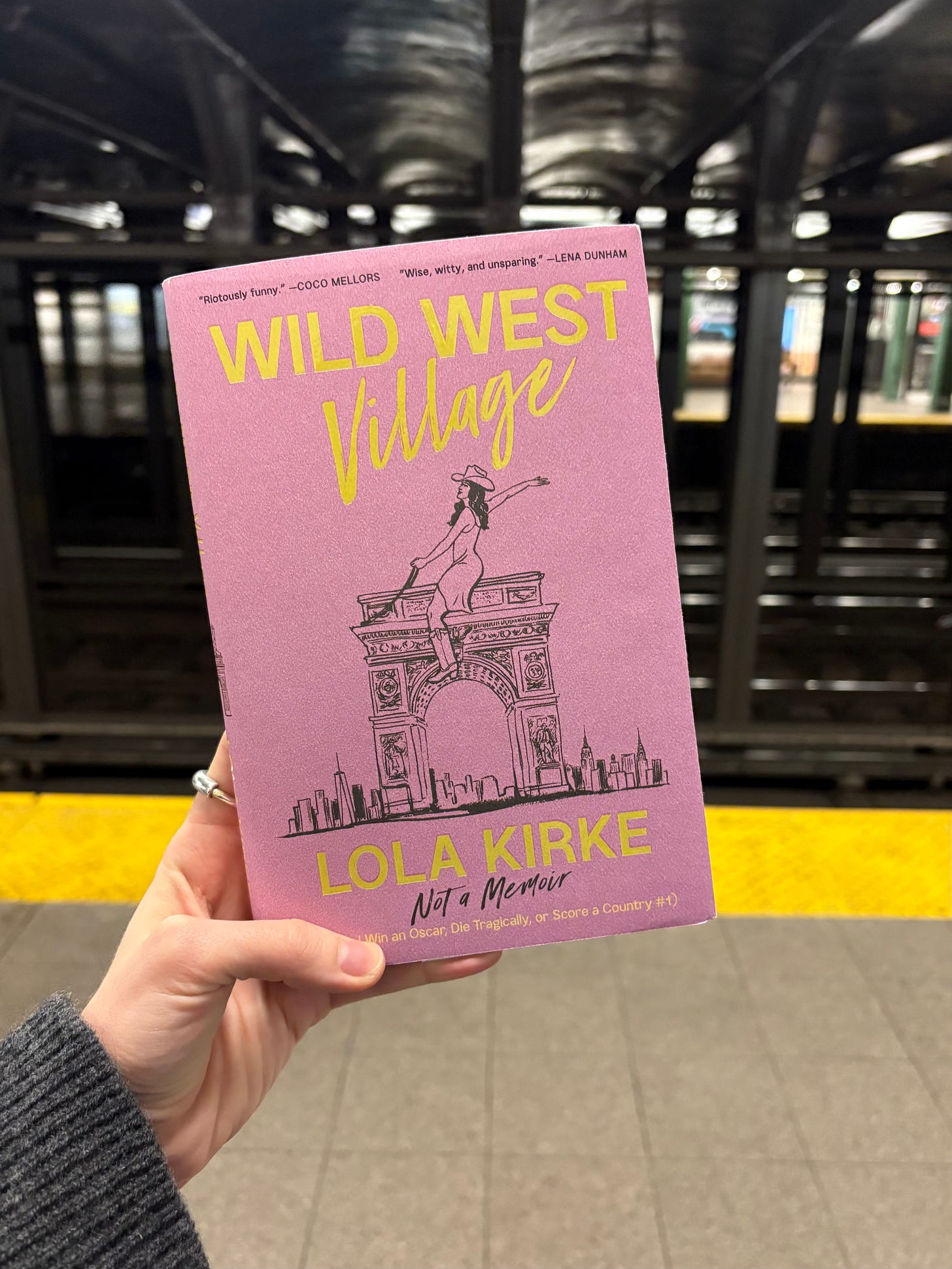
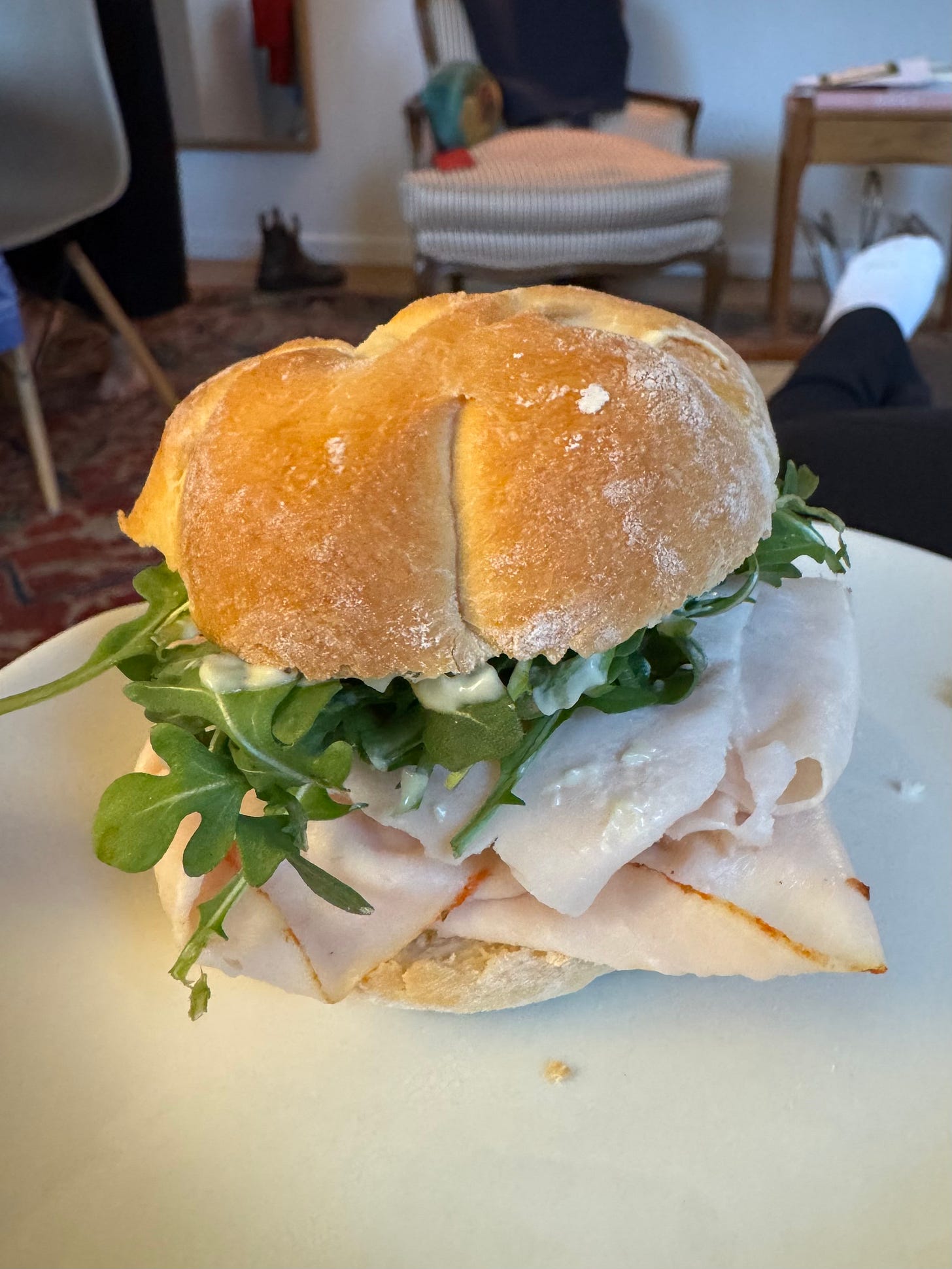



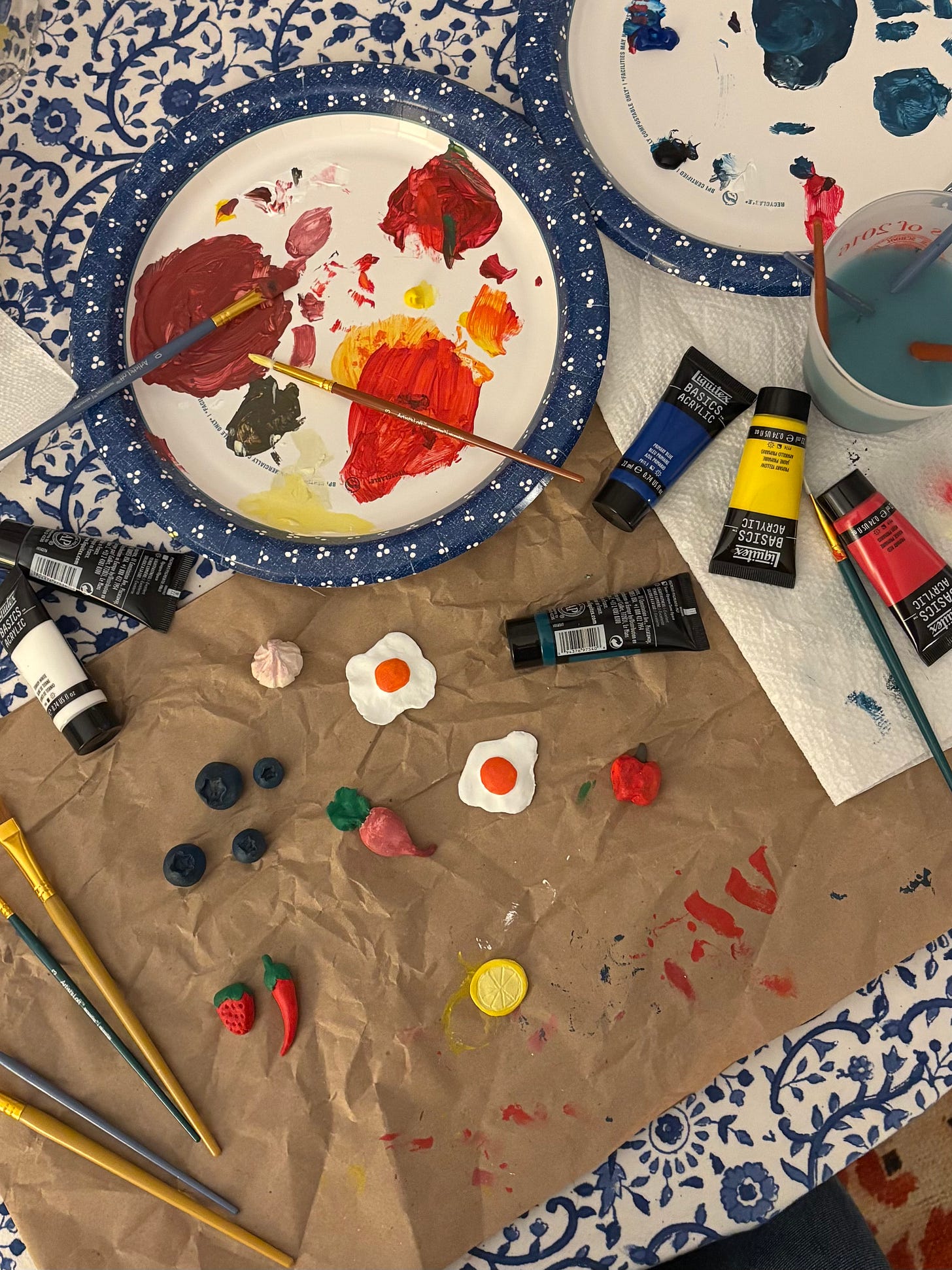
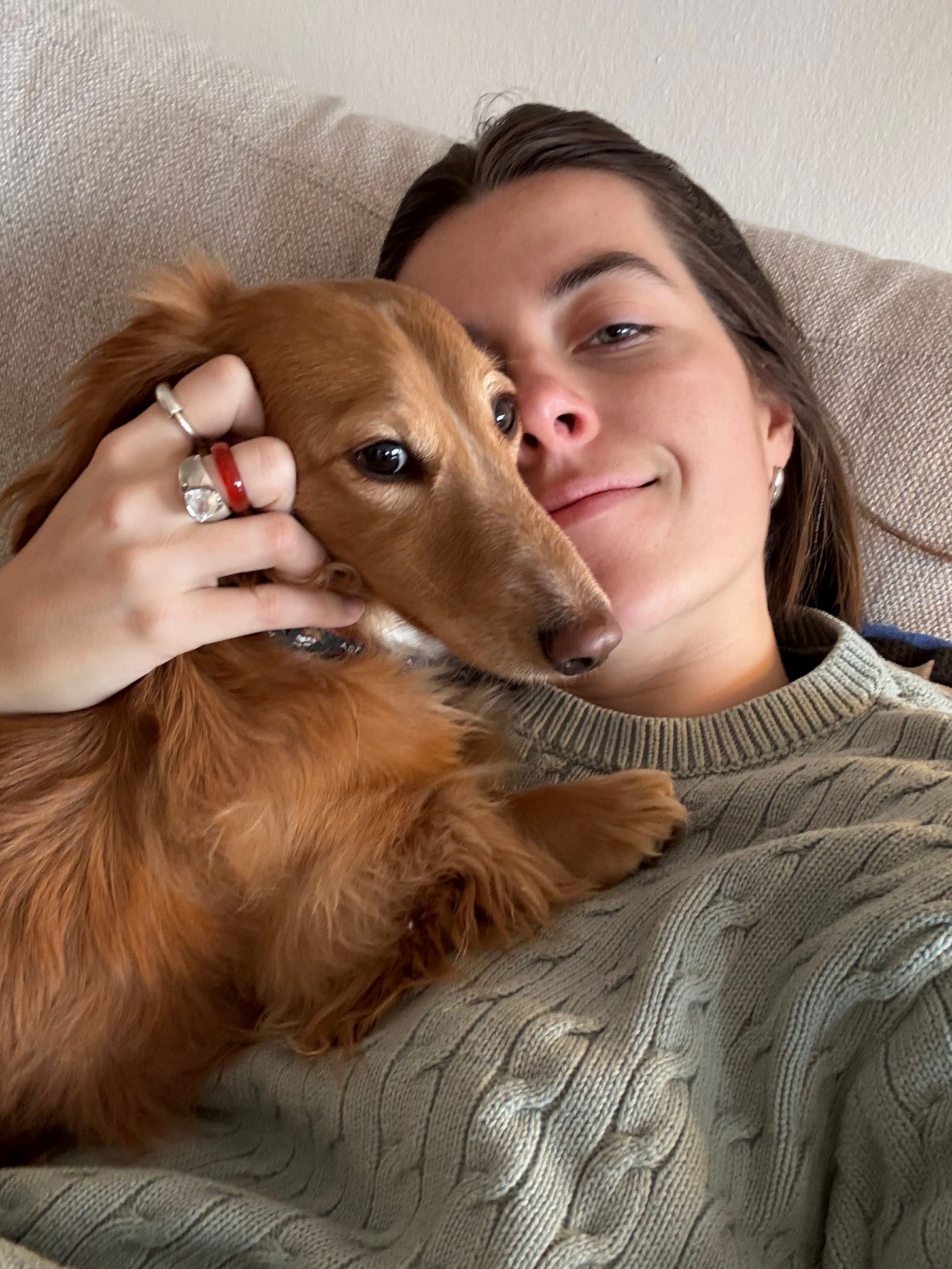

Noodle Pudding is just... the best. LOVED this round up <3
Thanks so much for reading, Eve! And I love Liz and her book club -- worlds colliding.